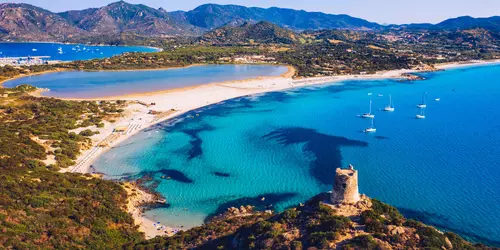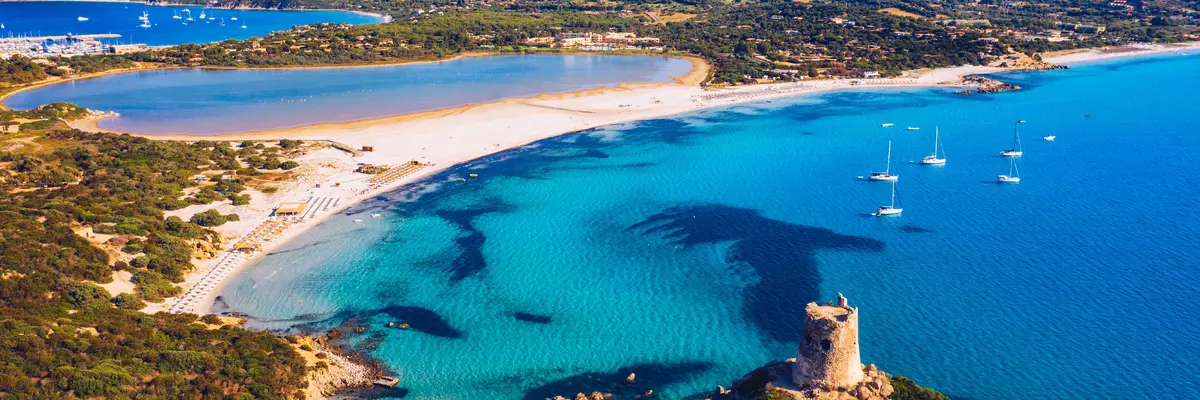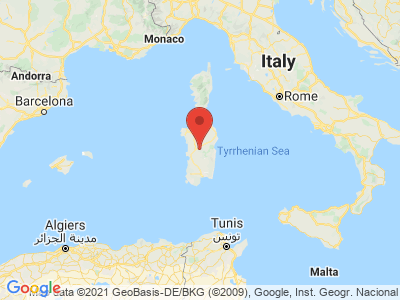Climate Table Sardinia
Jan | Feb | Mar | Apr | May | Jun | Jul | Aug | Sep | Oct | Nov | Dec | |
|---|---|---|---|---|---|---|---|---|---|---|---|---|
| Max. Temperature | 14° | 15° | 17° | 20° | 23° | 28° | 31° | 31° | 28° | 24° | 19° | 15° |
| Min. Temperature | 7° | 7° | 9° | 10° | 14° | 18° | 20° | 20° | 19° | 15° | 12° | 8° |
| Sun Hours | 5 | 5 | 6 | 7 | 9 | 9 | 11 | 10 | 8 | 7 | 5 | 4 |
| Water Temperature | 14° | 13° | 14° | 15° | 17° | 20° | 23° | 24° | 23° | 21° | 18° | 15° |
| Rain Days | 7 | 7 | 6 | 5 | 5 | 2 | 1 | 1 | 3 | 6 | 7 | 8 |
The climate year of Sardinia
Sardinia is the second largest island in the Mediterranean and, together with some small islands, forms an autonomous region of Italy. In Italian it is called Sardegna, in the past it was called "Sandalyon" by the Greeks because its shape resembles a shoe imprint. The legend says that the island was forgotten during the creation of the world and that is why the gods subsequently gave it the wonderful beaches and Mediterranean weather. The area of Sardinia is about 24,000 km² and 1.7 million inhabitants. Well known are the coastal sections Costa Smeralda, Costa Verde, Costa Paradiso and Costa del Sud, which together with other rocky sections and the small islands make a total coastal length of 1850 km. In addition, the entire island is a nature reserve for rare animals and plants.
General information about Sardinia
If the traveler does not just drive along the coast, but turns into the hinterland, he will drive through plains with gnarled cork oak forests, drive up to cooler coniferous forests and then back to the deep green and turquoise sea with the fine sandy beaches and crystal clear water. You will find secluded bays with red granite rocks, admire the rocky coast near Portobello and enjoy the emerald coast near Olbia. Idyllic mountain villages and the Mediterranean friendliness of the locals will make your stay an unforgettable experience. On the north coast, tourists can visit the most beautiful place on the island, Castelsardo with its sand-colored castle and below it the colorful houses pressed tightly against the rock. To enjoy the view from the castle at 114 meters above sea level, walk up the narrow streets for a panoramic view as far as Corsica. To get to know the Sardinian cuisine, stop at the scattered agriturismi (farms) with pension and try the porceddu (suckling pig).
Tourism Sardinia
Sardinia has a Mediterranean climate with relatively warm spring and autumn, mild winter and hot summer. About 300 sunny days a year give the opportunity for hiking, swimming, horseback riding and cycling. In summer, with 10 hours of sunshine from June to August, the thermometer can reach 40°C and it rarely rains. In winter it rains a lot and it is cool, but when the sun shines the temperature quickly rises to 20°C. Precipitation falls in late autumn and spring, winter is dry, but snow is not uncommon in the area of the Gennargentu Mountains. Water temperatures drop to about 14°C in winter and rise up to 26°C in summer, and even in November the sea can still be 20°C. There are different wind currents all year round, from the Mistral to the Scirocco.


